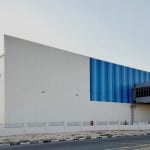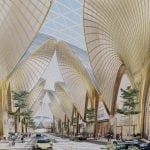America’s H-1B program has long been a pressure valve for the global knowledge economy, rationing scarce U.S. work authorizations through a lottery that routinely oversubscribes its 85,000 annual cap. In FY2025 the system again required multiple selection rounds to meet the cap, underscoring chronic demand, and by August 2025 USCIS had already announced the FY2026 cap was hit after selecting roughly 118,660 unique beneficiaries (120,141 registrations) in the initial draw.
That familiar scarcity has now collided with politics. On September 19, 2025, President Donald Trump signed a proclamation imposing a $100,000 annual fee on new H-1B applications while floating a high dollar “gold card” pathway for wealthy investors, moves that would radically increase the cost of hiring foreign specialists and are already drawing legal scrutiny. The administration has also proposed prioritizing higher wage petitions in place of a pure lottery. Even if partially enjoined, the signal to employers and workers is unmistakable: the H-1B route is becoming costlier, riskier, and less predictable.
The economics of such restrictions are well-mapped. A rich empirical literature finds that H-1B driven growth in STEM employment is associated with higher productivity and wage gains for U.S. natives, while tight caps and shocks push firms to expand hiring in foreign affiliates instead, precisely the kind of offshoring policymakers say they want to avoid. Recent work shows that when firms can’t access high skilled visas, they reallocate jobs abroad, increasing foreign affiliate employment at the intensive and extensive margins. In other words, closing the spigot doesn’t eliminate demand; it diverts it.
Knock-on effects on talent flows
The near term result is a re-routing of ambition. Canada demonstrated this dynamic vividly in 2023, when it opened a one-time stream offering open work permits to H-1B holders; the 10,000 application cap filled in under 48 hours. The initiative is now closed, but it proved how quickly high skilled mobility responds to policy differentials.
In 2025, with U.S. costs rising and selection odds uncertain, attention is shifting more squarely to the Gulf, especially the UAE, which has assembled a modular, relatively predictable residency stack aimed at global professionals. The UAE’s Golden Visa (10 year), Green Visa (5 year self-sponsored for skilled employees and freelancers), the new Blue Visa (10 year for climate and sustainability contributors), and Job Seeker and Virtual Work visas (for remote workers employed abroad) create multiple entry ramps that do not require the winner take all drama of a single lottery.
Layered on top are process reforms that matter in practice. The national “Work Bundle” initiative, rolling out across the federation, has consolidated steps and slashed processing time for work and residency permits, with Dubai reducing the cycle from roughly a month to about five days. For firms and candidates making cross border decisions, time certainty is capital.
Why the UAE is gaining gravitational pull
From a progressive political economy lens, the UAE’s edge is less about zero personal income tax (though that helps) than about policy design and optionality. Professionals can self-sponsor residency, move families, and toggle between employment, freelance, and entrepreneurial tracks without relinquishing career agency, features that reduce the “visa lock-in” frictions common in employer tied systems. Meanwhile, structural reforms, 100% foreign ownership onshore for most activities, plus clear tax rules with no personal income tax, lower set up barriers for founders and remote executives.
Crucially, ecosystem depth is catching up. Dubai International Financial Centre (DIFC) recorded 1,081 new companies in H1-2025, bringing totals to 7,700 active firms, while Abu Dhabi Global Market (ADGM) posted double digit growth in active entities and assets under management. Dubai was ranked among the world’s top four FinTech hubs in September 2025, a symbolic but telling marker of critical mass. Venture activity across MENA has cooled with global cycles, but the UAE still captures the largest regional share. For mobile talent, this means not just a visa, but a credible market.
Strategic implications
What’s changing in the U.S.?
If America makes H-1B visas much more expensive and gives priority mainly to the highest salaries, getting a U.S. work visa will feel riskier and less predictable.
How will companies react?
They won’t stop hiring. They’ll move more high skill jobs to other countries, set up team “hubs” in places like the UAE, Canada, and parts of Europe, and compete even harder for experienced engineers and tech talent.
Why could this hurt innovation?
Recent U.S. fixes already reduced lottery abuse. Adding very large fees could scare off both workers and employers, pushing projects and investment overseas instead of keeping them in the U.S.
Where does the UAE fit in?
The UAE can win more of this talent if it keeps visas quick and flexible, expands the new “Work Bundle” nationwide, makes family life easier (housing, schools, spouse work options), keeps clear rules for freelancers and startups, and keeps strengthening its finance and tech hubs (DIFC/ADGM, AI, climate tech). The new Blue Visa for climate specialists is a plus.
The global talent market is shifting from “lottery odds” to “life-planning.” As the U.S. adds uncertainty, Dubai and Abu Dhabi can stand out by offering speed, predictability, and real career options, turning the UAE into a first choice platform for skilled workers and the companies that need them.







Leave a Reply